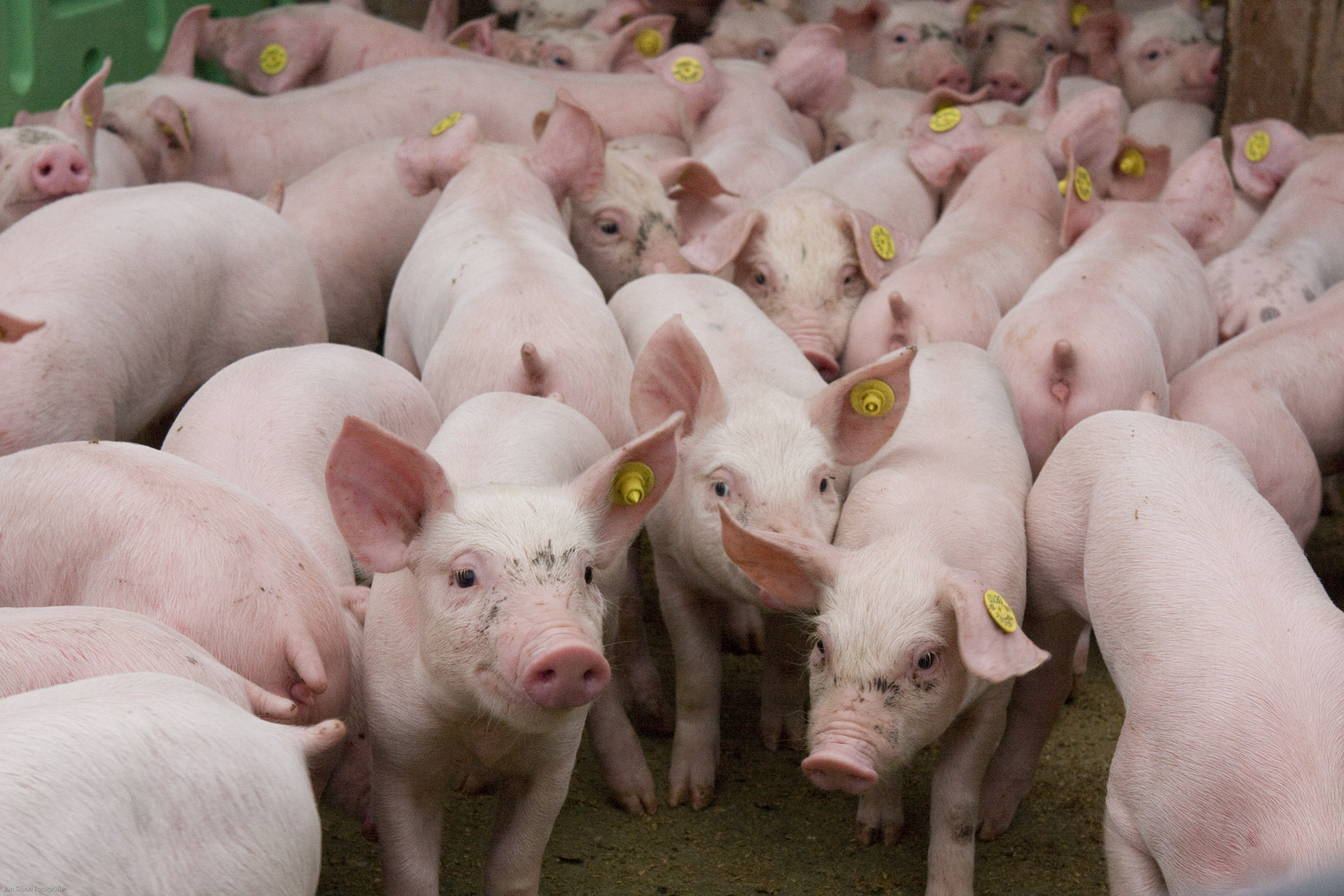Superdosing: A chance to unlock gains in swine

Gone are the days when phytase was only used to unlock phosphorus. Superdosing phytase – at a higher dosage than conventional dosing – has been shown to lead to so-called ‘extra-phosphoric effects’. The result is higher performance gains in pig production.
By Dr Gustavo Cordero and Dr Rob ten Doeschate, AB Vista
As the use of phytase feed enzymes has grown in recent years, so too has interest in the potential benefits to be gained not just from the release of valuable phosphorus bound up in feed ingredient phytates, but also from elimination of phytate itself. The concept of superdosing – defined as the addition of sufficient phytase to quickly destroy all phytate present in the diet – is now well-proven in delivering increased performance for both swine and poultry.
Phytate is both a nutrient and an anti-nutrient, being categorised as the former due to its phosphorus content and the latter due to the detrimental effects phytate can have on nutrient digestibility and absorption. Phytate binds to essential nutrients within the intestine, rendering them less available to the pig’s digestive enzymes, and forcing additional digestive secretions in an effort to compensate – a reaction that is both nutrient inefficient and potentially damaging to the delicate gut wall lining.
Anti-nutrient effects
Phytate has been implicated in reduced calcium, zinc, iron, magnesium, sodium and copper apparent absorption, whilst also reducing the apparent digestibility of amino acids by 3-16%, depending on the makeup of the diet. The energy cost of additional secretions and losses in the gastrointestinal tract has been shown to reduce apparent energy metabolism in pigs (seeFigure 1).
Investigating the anti-nutrient effects of phytate in pig diets has always been difficult, since any change in feed ingredients alters not only the level of phytate, but also other nutrients and anti-nutrients, such as non-starch polysaccharides (fibre). One option has been to include synthetic phytate (in the form of phytic acid), and this has been used successfully in a number of trials to highlight the extent of the effect phytate can have on average daily feed intake (ADFI), average daily gain (ADG) and feed conversion ratio (FCR) in weaned piglets (see Figure 2).
However, perhaps the clearest indicator of the benefits of eliminating phytate comes from the impact of superdosing using phytase enzymes. Phytases have long been used to release the phosphorus found in plant phytate and previously viewed as ‘non-available’. Common recommendations, suggesting a 500 FTU/kg feed dose of a modern phytase, can release 0.10-0.15% available phosphorus. It is a level which is sufficient to provide worthwhile cost savings during feed manufacture.
Superdosing benefits
Superdosing, in contrast, is defined as using phytase at over 500 FTU/kg feed in an attempt to completely degrade all soluble phytate in the diet, effectively eliminating its anti-nutrient effects. The benefits are typically referred to as ‘extra-phosphoric’ (i.e. beyond simple phosphoric release), and result from increased feed intake, improved nutrient digestibility, additional mineral release and reduced energy costs of digestion.
In practice, the use of high doses of phytase can increase profitability through two principal means. The first is to gain significant enhancements in pig performance from the extra-phosphoric effects of using a phytase above and beyond the usual mode of action for phosphorus release. The second maximises formulation cost savings through use of previously avoided high-phytate (but low cost) feed ingredients whilst maintaining performance levels. To date, the majority of pig trials have focused on the former, combining some formulation cost savings with large improvements in performance which more than pay for the extra phytase inclusion costs. Figure 3 shows the results of 19 trials in which superdosing with Quantum phytase was compared to the performance of a matched control diet (orange line, 100%) formulated to be nutritionally adequate, including calcium and phosphorus. ADG exceeded that of the control diet in 16 of the trials (84%) and FCR in 14 (74%), with only two trials failing to demonstrate a benefit in one or other measure. As the control diets were adequate in phosphorus, any improvements are purely due to removal of the anti-nutrient influence of phytate. The key to success is to achieve rapid and efficient phytate degradation at an early stage in the gastrointestinal tract, so as to maximise the time during which digestion and absorption processes can benefit. It is also important to be able to maintain continued phytate degradation even at low concentrations to drive towards elimination, rather than activity slowing down or stopping as soluble phytate levels drop. This would reduce levels, but not achieve the full benefits of elimination.
Phytate elimination
For the negative anti-nutrient effects of phytate to be eliminated, 80-85% of total phytate typically needs to be degraded. Given that some phytate is insoluble (unavailable), high levels of phytate breakdown may require available (soluble) stomach phytate concentrations to be reduced to 0.05% or below.
Optimal phytase activity for superdosing therefore differs from that required to simply release available phosphorus. It relies not only on the activity of the enzyme early in the gastrointestinal tract at low pH (acidity in the stomach), but also on other characteristics such as intrinsic thermostability (to avoid delays to onset of activity caused by thermostabilising coatings), protease resistance (to avoid the phytase itself degrading in the stomach), and activity at very low substrate concentrations. Put simply, the ideal phytase for superdosing is intrinsically thermostable, able to survive stomach conditions, exhibits high levels of activity at low pH (2.5-3.5) and is able to degrade phytate even at very low concentrations.
Meeting requirements
Quantum Blue, with this third generation enhanced E. coli phytase is designed to meet these requirements for superdosing. This method of phytase use moves away from the application of a dose-dependent matrix and focuses more on optimising animal performance, but an understanding of the factors that affect phytase superdosing performance is critical when making product choices. The potential gains from eliminating phytate through superdosing are substantial, and likely to result in even greater phytase use in the future as pig producers embrace the chance to further improve feed use efficiency and pig performance.
Article featured in AllAboutFeed 22.3 2014











